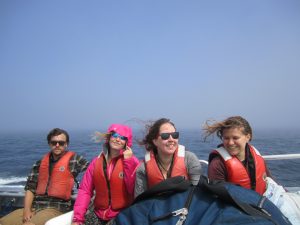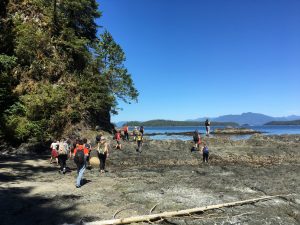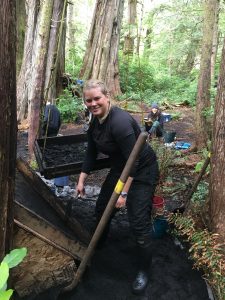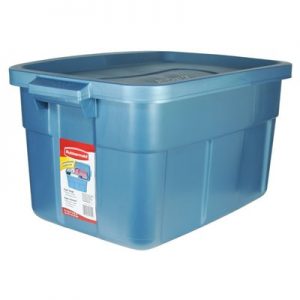-
2022 UVic Barkley Sound Archaeology Field School Packing List
-
Here is a list of recommended items to bring to the field this season, as compiled by Dylan Hillis and students from previous years. Please note, we will be camping for 16 days on a remote island for the first half of the course and transiting daily between our dig site and camp via small boats. During the second half of the course, we will be in the community of Bamfield. Therefore, you will need a tent and all other relevant camping equipment for the first half of the course (see below). As always, if you have any questions, please be in touch with the course instructor (Iain McKechnie) by following this link or email iim at uvic dot ca.
Clothing/Personal Gear (please don’t bring anything you’re not willing to get dirty!)
• Rubber boots – please ensure they are waterproof, sturdy, comfortable, and goes up well beyond your ankle. As you will spend the majority of each day in these, please make sure they fit well and are waterproof! Note: beware if they are old and starting to crack, as they will start to leak and no amount of duct tape will fix it.• Runners and/or hiking boots – comfortable and one’s you don’t mind getting dirty.• Sandals or water shoes – we will be on a number of beaches that will require you to get your feet wet, so a good pair of sturdy sandals (i.e., barnacle proof) is highly recommended (Barnacle cuts can get infected easily are the most common injury).• Wool or synthetic socks – at least one per day with multiple back-up pairs (i.e., bring more than you think you’ll need!).• Work/gardening gloves – two pairs recommended.• Toque/beanie – for cold days and early mornings (i.e., riding in a boat).• Hat – ideally wide brimmed sun hat or baseball cap for sunny days on the water (we will not judge if you have drawstrings to keep on your head).• Rubber rain gear (top and bottom) – both pants (overalls with suspenders/straps) and jacket are essential gear items. You do NOT need your fancy Gore-Tex rain gear, rather a set of good durable rubber rain gear that can get dirty is preferred. Please do not leave this as an afterthought – rubber rain gear and rubber boots are the most used items you will bring on this trip! Recommended brands are Viking (cheap), Helly Hannsen (middle), Grundens (expensive).• Warm fleece/wool sweater – we will be spending large amounts of time on or near the water, so please bring warm and cozy clothing that will continue to keep you warm when it gets wet.• Work pants and/or synthetic leggings – to wear under your rubber rain pants.• Essential clothing (T-shirts for hot days, long-sleeved shirts, underwear, etc.) – wool and synthetic clothing are preferred, although a few cotton items will be appreciated on hot days.• Swimsuit and towel – for after work ocean dips! You may consider bringing an extra towel if space permits.• Washcloth and/or baby wipes – hygiene is important (but avoid excess garbage) carrying out our garbage!• Sunglasses – I recommend polarized lenses, but any will do.• Pocket knife – a handy item to have along.• Headlamp and/or flashlight.• Lunch container – large enough for two sandwiches!• Day bag – ideally this would be waterproof as precipitation has been observed in past years• Loonies – for shower day (kind of vita but will be explained while in the field)!Camping Equipment:
• Rubbermaid tote – for storing gear/clothing and other personal belongings.• Tent – this does not need to be fancy or ‘ultra-light’ but rather any tent that provides good protection from the rain will do.• Tarps – ideally you will want two (one to serve as a ground tarp and the other above), please ensure you bring extra twine/rope to secure tarps and the tarp itself is large enough to cover your entire tent.• Inflatable sleeping pad or foam pads – comfort is key!• Sleeping bag – synthetic is much better than down for camping on the coast.• Pillow• ToiletriesOptional Gear:
• Knee pads.• Bug spray.• Sunblock.• Personal first aid kit.• Extra twine/rope and clothes pins for hanging wet clothing.• Portable phone charger.• Ocean-friendly soap.• Mug or thermos.• Gravol (if you know you get seasick).• Camp chair (compact foldable).Cell Phones:
• There is intermittent cell coverage in the Broken Group Islands (but not great at where we are camping). While in camp, we will have the ability to charge cell phones and other electronic devices when the generators are running. Note, there will be limited ability to charge everyone’s devices all at once and often charging vital project equipment will take precedence. Consider labeling your charging cords to avoid confusion.



Gear transport
